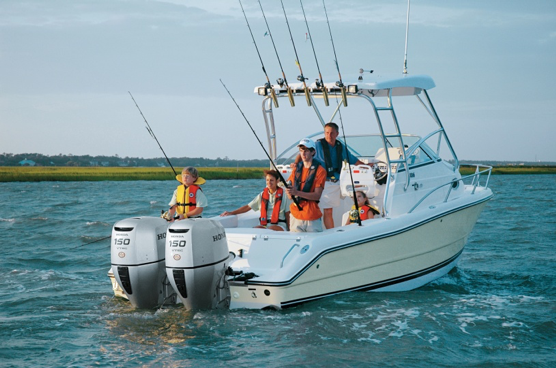Request a Quote
,


A day of fishing with friends is usually a fun way to reconnect and enjoy the summer. We’ve created a list of fishing tips to make the most out of your fishing adventure.
All boats must have a U.S. Coast Guard approved life jacket for each person on a boat, by law. Some states require children to wear a life jacket at all times. Try on the life jacket before buying it. Make sure it is the right fit for your height and weight and that it has a snug fit. Attach a Personal Locator Beacon (PLB) with a clip, onto a life jacket. Make sure there is a first aid kit, flashlight, extra batteries and sunscreen on the boat. A VHF radio, fire extinguisher and a whistle can also be used, in an emergency. Did you know that the U.S. Coast Guard has a Boating Safety Mobile App? Features of the app include: state boating information, file a float plan, free boating safety check requests, navigation rules, the latest safety regulations, request emergency assistance and much more.
Our dealers and staff go through training and receive updates to tune-up their knowledge of the entire Honda outboard line. Contact {{Dealer Name}} to schedule maintenance for your Honda outboard. Refer to the Honda owner’s manual for additional maintenance information. Contact Simply Outdoors, Granby, CO - (970) 887-8877 for servicing and Honda Marine Accessories.
For lake fishing, use crickets, worms, minnows and leeches for bait. For saltwater fishing, use shrimp, shellfish, cut bait and bait fish. For artificial lures, use fishing jigs. Identifying the target species will help you narrow down the right bait to use.
Cast your bait deeper until you discover where the fish are. If varying the lure and depth doesn’t work, then consider changing locations.
The hotter the temperature is outside, the deeper you’ll need to fish. Fish like cool temperatures and like to be in deeper, cooler water, as the temperature outside rises. It’s also a good idea to check the weather forecast for storms, lightning and high winds. The marine forecast includes wind direction and speed, wave height, precipitation predictions and storm warnings. The National Oceanic Atmospheric Administration (NOAA) provides marine weather forecasts through the National Weather Service. The forecast is updated at least four times a day.
Finally, a pair of polarized sunglasses will not only block the UV rays and the sun’s glare on the water, but they will help you to see a little better into the water, to locate fish.